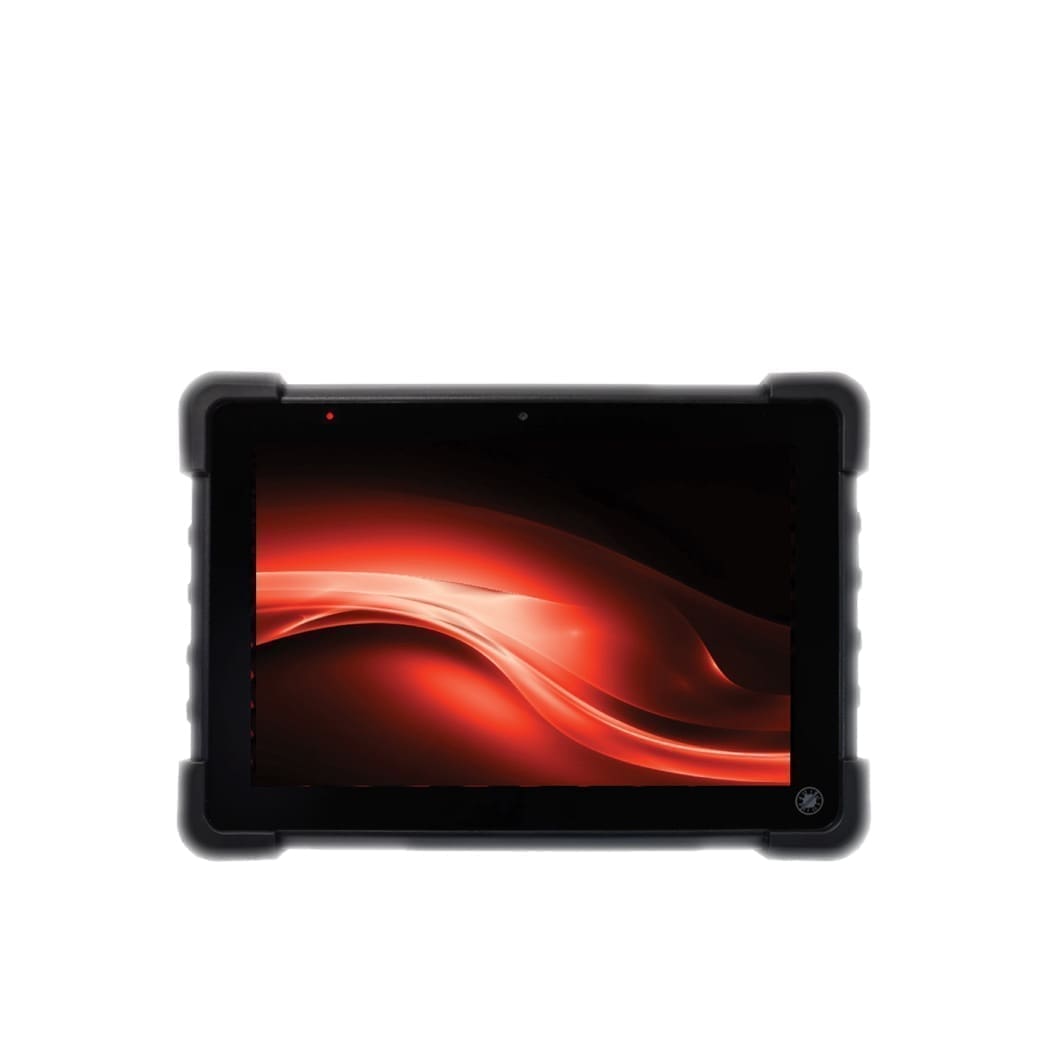Drive Smart
Automotive Touch Screens & Digital Displays
Unlock the next level of in-car technology with our Automotive Digital Display & Touch Screen Solutions—contact us to learn more.
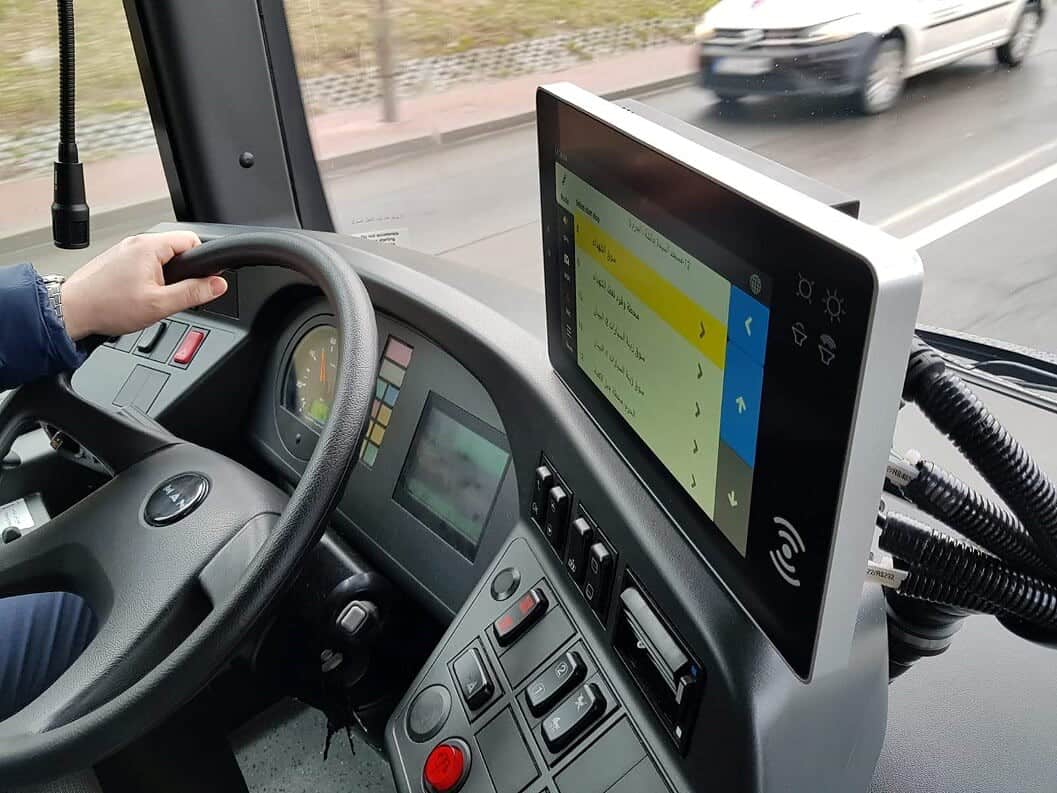
Innovative Control
Touchscreen Systems for the Automotive Industry
Streamline your automotive operations and enhance the driver experience with our specialized Touchscreen Systems for the Automotive Industry. From real-time vehicle diagnostics to interactive navigation, these systems are designed to meet the diverse needs of modern vehicles. Take the next step in modernizing your automotive offerings by implementing our advanced touchscreen technology. Contact us to learn how our solutions can enhance vehicle efficiency and user-friendliness.
Intelligent Mobility
Touchscreen
Solutions
In today’s fast-paced automotive industry, the need for real-time information and streamlined processes is more critical than ever. faytech’s touchscreen solutions for vehicles offer an advanced yet user-friendly way to provide essential information to drivers while optimizing operational efficiency. From interactive dashboards to real-time diagnostics, our touchscreen systems are designed to be versatile and intuitive, meeting the diverse needs of drivers and automotive professionals alike.
Don’t miss out on the opportunity to transform your vehicles into modern, efficient, and user-friendly machines. We have prepared a comprehensive PDF guide detailing the various applications and benefits of our Touchscreen Solutions for the Automotive Industry. Download it now to gain deeper insights into how our technology can serve your specific needs and improve overall vehicle functionality.
Transform your automotive management with faytech’s touchscreen monitors, designed to streamline operations and optimize data-driven decision-making in the auto industry.
Seamless management with faytech’s touchscreen PCs, specifically engineered to enhance productivity and facilitate data-driven practices in the auto industry.
Harness the power of faytech’s touchscreen tablets to bring portability and real-time data management to your automotive operations.
Explore faytech’s specialty touchscreen solutions, custom-designed to address unique challenges in the automotive and transportation industries.
Automotive Digital
Display Solutions
Discover a new frontier in automotive technology by integrating faytech’s Automotive Digital Display Solutions into your vehicles—reach out to us today to learn how our state-of-the-art systems can significantly enhance your vehicle’s functionality and user experience.

Head-Up Display
Experience real-time data like never before with faytech’s Head-Up Display, designed to project crucial information directly onto the windshield, allowing drivers to stay informed without taking their eyes off the road.
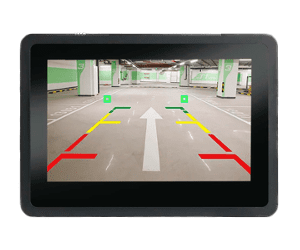
Rear-View Camera Display
Optimize your vehicle’s safety with faytech’s Rear-View Camera Display, ensuring clear visuals and precision when reversing or parking.
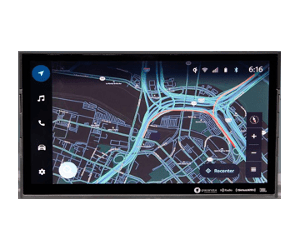
Infotainment System
Engage your passengers and simplify your drive with faytech’s advanced Infotainment System, designed to consolidate media, navigation, and communications into one user-friendly interface.

Side-View Mirror Display
Enhance driving visibility with faytech’s Side-View Mirror Display, providing real-time insights and clarity for safer lane changes and turns.
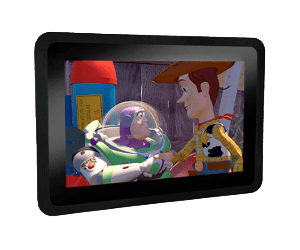
Rear-Seat Entertainment
Enhance passenger journeys with faytech’s Rear-Seat Entertainment solutions, offering immersive multimedia experiences for comfort and enjoyment during long drives.

Mobile In-Car PC
Optimize in-vehicle operations with faytech’s Mobile In-Car PC, ensuring seamless integration of essential applications and tools for advanced on-the-go computing.
Revolutionary Transport
SMART Solutions for Cars & Vehicles
Upgrade your vehicle’s operational efficiency with faytech’s SMART Solutions for Cars & Vehicles. Our technology offers data analytics, real-time monitoring, and automated controls specifically tailored for the automotive sector. These solutions provide an integrated approach to handling complex tasks like traffic navigation, vehicle diagnostics, and entertainment systems. Contact us now to discover how our SMART Solutions can help make your vehicle more efficient and enhance the overall driving experience.



Precision Driven
Industrial Touchscreen Displays for Autos
Unmatched Durability
Experience the resilience and reliability of our Industrial Touchscreen Displays, tailored to meet the rigorous demands of the automotive industry.
Why use commercial grade touchscreen monitors for automotive applications?
Discover why commercial-grade touchscreen monitors are the go-to choice for automotive applications, offering enhanced durability, functionality, and efficiency.
Precision Engineering
Industrial Touchscreen PCs for Cars and Vehicles
Built for the Road
Enhance your vehicle’s capabilities with faytech’s Industrial Touchscreen PCs, crafted to endure the demanding conditions of dynamic automotive environments. These robust systems deliver durability and efficiency, ensuring smooth operations for features like navigation, diagnostics, and infotainment.
Why use commercial grade touchscreen computers for automotive applications?
Consistent Performance
Discover why commercial-grade touchscreen computers are essential for automotive applications, delivering reliable functionality, enduring durability, and the adaptability to manage diverse vehicular tasks.
More Information
Car LCD Monitor & PC Touchscreen Solutions
Automotive touchscreens have revolutionized the way carmakers and drivers interact with car systems by incorporating the new vision display technology. These touchscreens allow drivers to easily control various functions of their car using a phone-like interface, thanks to the integration of display drivers. These touchscreen controllers provide a seamless touch interface for controlling advanced features in automotive applications, such as infotainment systems. With their intuitive design and wide range of features, touchscreen controllers in infotainment systems have significantly enhanced the overall driving experience. Car makers are now incorporating these new vision displays into their vehicles.
From adjusting climate control settings to navigating GPS directions, these infotainment systems serve as the central hub for accessing and controlling various aspects of the vehicle. With their touchscreen controllers and touch interface, they are essential for automotive applications. Gone are the days of fumbling with physical buttons or knobs; now, drivers can easily navigate through menus and options with a simple tap or swipe on the touchscreen controllers. The touch interface allows for seamless interaction with apps on the phone.
Not only do carmakers offer automotive touch screens for direct control, but they also support indirect input methods such as voice commands or steering wheel controls. LCD monitors are used for these interactions. This versatility ensures that carmakers can monitor driver interactions with the system safely and conveniently while keeping their focus on the road, minimizing distraction.
With their sleek design and extensive functionality, automotive touch screens have become an essential component for carmakers, providing a seamless and intuitive interface for drivers to access a wide range of features effortlessly. These LCD monitors enable interactive interactions with the vehicle’s various functions.
Evolution and rise of touch screens in the automotive industry
LCD monitors with touch screen technology have come a long way, evolving into more advanced and reliable systems for interactive design interactions over the years. In response to the growing demand for convenience and versatility, carmakers in the automotive industry have witnessed a significant increase in the adoption of LCD touch screens. These screens allow for intuitive interactions and monitor various functions within the vehicle. These LCD monitors have revolutionized the way carmakers and users interact with our cars.
The convenience offered by touch screens has been a driving force behind their popularity among carmakers in the automotive industry. These touch screens allow for easy interactions and enable carmakers to monitor various aspects of the vehicle. Car manufacturers recognize that consumers are accustomed to using touch screens on their phones and other devices, making them familiar with this intuitive form of interaction. It is important for car manufacturers to monitor these interactions closely. By incorporating touch screens into vehicles, carmakers are able to provide users with seamless interactions, making it easy for them to transition from their personal tech devices to their cars.
One major advantage of touch screens is that they enhance interactions by eliminating the need for physical buttons and knobs, resulting in a sleeker interior design. This not only enhances the overall aesthetics of the vehicle but also allows for more space-saving options within the cabin, promoting better interactions. With touch screens, car interiors can be designed with a minimalist approach, creating an uncluttered and modern look that enhances interactions.
Engineers have worked tirelessly to ensure that touch screens in automobiles perform reliably in various environments and provide seamless interactions. They have developed technologies that allow these displays to function seamlessly even under extreme conditions such as temperature fluctuations or direct sunlight exposure, enhancing user interactions. The durability and responsiveness of automotive touch screens have significantly improved over time, enhancing interactions and providing users with a smooth and efficient user experience.
Moreover, touch screens offer enhanced functionality compared to traditional physical buttons and knobs. They provide access to a wide range of features and settings through intuitive menus and icons. This simplifies complex operations such as adjusting climate controls or navigating through multimedia options. With just a few taps on the screen, drivers can easily control various aspects of their vehicle without distraction.
In addition to convenience and functionality, touch screens also contribute to improved safety on the road. By consolidating multiple functions into one display panel, drivers can minimize the time spent searching for specific controls. This reduces driver distraction and allows them to keep their focus on the road. Furthermore, touch screens can be integrated with voice recognition systems, enabling hands-free operation and further enhancing safety.
As technology continues to advance, we can expect even more innovative features and improvements in automotive touch screens. Car manufacturers are constantly striving to enhance user experience by incorporating the latest tech advancements into their vehicles. From augmented reality displays to haptic feedback, the possibilities for future developments in automotive touch screen technology are endless.
Applications of touch screens in car systems
Touch screens have become an integral part of modern automotive systems, revolutionizing the way we interact with our vehicles. These versatile interfaces offer a wide range of applications and functionalities that enhance the driving experience. From controlling infotainment systems to managing in-car communication features, touch screens have become a primary means of interaction in today’s cars.
Controlling Infotainment Systems
One of the key applications of touch screens in car systems is controlling infotainment features. With just a tap or swipe, drivers can easily navigate through various options and menus to control audio playback, access navigation systems, and integrate their smartphones seamlessly. This allows for a more intuitive and user-friendly experience while on the road.
Climate Control Adjustments and Seat Settings Customization
Another important application of touch screens in automotive systems is enabling climate control adjustments and seat settings customization. Instead of relying on traditional physical controls, drivers can now conveniently make temperature changes or adjust fan speeds using touch screen interfaces. They can personalize their seating preferences by modifying seat positions, lumbar support, and even massage settings directly through the touch screen.
Access to Vehicle Diagnostics
Touch screens also provide drivers with easy access to vehicle diagnostics. By incorporating diagnostic apps into the system, users can quickly check vital information about their car’s performance and health. This includes monitoring fuel efficiency, tire pressure levels, engine status, and other important metrics. Having this information readily available helps drivers stay informed about their vehicle’s condition without relying on external devices or manual checks.
In-Car Communication Features
In-car communication features such as hands-free calling and voice commands are seamlessly managed through touch screen interfaces. Drivers can simply tap on the screen to answer or decline calls without taking their hands off the wheel or eyes off the road. Voice commands enable them to make phone calls or send messages effortlessly by utilizing speech recognition technology integrated into these touch screen systems. This ensures a safer and more convenient communication experience while driving.
Enhanced User Experience
One of the ways that interactive digital displays and touchscreens will greatly benefit the automotive industry is by making it much easier for drivers to access important information and controls while they are on the road. In the past, drivers would have to rely on physical buttons and knobs to adjust settings such as temperature, audio volume, and navigation. However, with the introduction of touchscreens in vehicles, these controls are now conveniently located right at the driver’s fingertips.
For example, instead of having to search for the buttons to adjust the air conditioning or heating in their vehicle, drivers can simply tap on the corresponding icon on the touchscreen display. This not only saves time but also reduces distractions as drivers can keep their eyes on the road while making adjustments. Additionally, touchscreens often provide visual feedback when a button is pressed, further enhancing the user experience and ensuring that drivers know their commands have been registered.
Interactive digital displays and touchscreens are revolutionizing the automotive industry by providing drivers with easier access to important information and controls. From adjusting settings like temperature and audio volume to accessing vital vehicle information, touchscreens offer a more convenient and intuitive way for drivers to interact with their vehicles. Additionally, the integration of touchscreens with safety features enhances
Intelligent displays for automotive use
Intelligent displays on automotive touch screens have revolutionized the way drivers interact with their vehicles. These displays provide real-time information about crucial aspects such as fuel consumption, battery levels, and engine performance. With customizable layouts, drivers can prioritize the display of essential data according to their preferences.
Real-Time Information at Your Fingertips
Automotive touch screens equipped with intelligent displays offer a wealth of information to enhance the driving experience. Drivers can easily monitor vital metrics like fuel efficiency, battery charge levels, and engine diagnostics in real-time. This allows them to make informed decisions and optimize their driving habits for better performance and efficiency.
Customizable Layouts for Personalization
Gone are the days of one-size-fits-all displays in cars. With intelligent touch screens, drivers have the freedom to design their own layouts based on their individual needs and preferences. Whether it’s placing fuel consumption data front and center or prioritizing battery charge levels, these customizable layouts ensure that drivers have quick access to the information that matters most to them.
Enhanced Visual Appeal with Advanced Graphics Capabilities
Intelligent displays not only provide valuable information but also enhance visual appeal through advanced graphics capabilities. These displays utilize high-quality LCD panels and cutting-edge display drivers to deliver vibrant colors, sharp images, and smooth animations. The result is an aesthetically pleasing interface that captures visual attention without compromising readability under different lighting conditions.
Optimized User Experience for Safer Driving
One of the key advantages of intelligent displays is their ability to optimize the user experience for safer driving. Designers in automotive design studios carefully consider factors like ergonomics, ease of use, and minimizing distractions when creating these interfaces. By providing important data at a glance and utilizing intuitive controls, intelligent touch screens help minimize driver distraction while keeping critical information easily accessible.
Future Innovations in Automotive Touch Screens
As technology continues to advance rapidly, automotive touch screens are poised to offer even more advanced features in the future. From integrating with other vehicle systems like air conditioning and navigation to incorporating augmented reality overlays, the possibilities are endless. Designers and engineers are constantly pushing boundaries to create innovative solutions that enhance the driving experience and make our journeys safer and more enjoyable.
Touchscreen solutions for automotive industry
Various Touchscreen Technologies
In the automotive industry, touchscreen technology has become a crucial component of modern vehicles. Different touchscreen technologies, such as resistive, capacitive, and infrared, are employed based on specific requirements.
-
Resistive touchscreens consist of multiple layers that detect pressure to register input. They are cost-effective and offer good visibility even in direct sunlight.
-
Capacitive touchscreens use the electrical properties of the human body to detect touch. They provide excellent responsiveness and support multi-touch functionality.
-
Infrared touchscreens utilize an array of sensors to detect interruptions in infrared light beams caused by touch inputs. They offer high accuracy and are resistant to scratches.
Ruggedized Touchscreens for Harsh Environments
Automotive touchscreens need to withstand harsh environments characterized by extreme temperatures, vibrations, and potential exposure to moisture or dust. To address these challenges, manufacturers develop ruggedized touchscreens that can endure such conditions.
-
Ruggedized touchscreens feature robust construction with reinforced glass panels or protective coatings that enhance durability.
-
These screens undergo rigorous testing procedures to ensure they meet industry standards for temperature resistance, shock resistance, and ingress protection.
-
Some ruggedized touchscreens also incorporate anti-glare or anti-fingerprint coatings to improve visibility under different lighting conditions.
Multi-Touch Functionality for Seamless Interaction
One of the key advantages of automotive touchscreens is their ability to support multi-touch functionality. This enables intuitive gestures like pinch-to-zoom or swipe gestures for seamless interaction with various applications.
-
Multi-touch technology allows users to perform actions using multiple fingers simultaneously.
-
Pinch-to-zoom gestures enable users to zoom in or out on maps or images by pinching two fingers together or spreading them apart.
-
Swipe gestures enable users to navigate through menus or scroll through content effortlessly by swiping their fingers across the screen.
By incorporating multi-touch functionality into automotive touchscreens, manufacturers enhance the user experience and make it more intuitive and engaging.
Analysis of car touch screen technology in automotive sector
Car Touchscreen Technology Improves Driver Safety
Car touchscreen technology has revolutionized the automotive sector by enhancing driver safety. One significant advantage is the reduction of distractions caused by physical controls. With traditional buttons and knobs, drivers would often have to take their eyes off the road to locate and press the desired control. However, with touchscreens, all controls are conveniently displayed on a single interface, allowing drivers to access various functions without diverting their attention from driving.
Haptic Feedback Integration Enhances User Experience
Another remarkable feature of automotive touchscreens is haptic feedback integration. This technology provides tactile responses that simulate button presses on flat surfaces, delivering a more engaging user experience. When users interact with the touchscreen, they can feel a slight vibration or sensation that mimics pressing a physical button. This haptic feedback not only provides confirmation of input but also helps users navigate through menus and options more efficiently.
Gesture Recognition Minimizes Distractions
In addition to reducing distractions caused by physical controls, car touchscreens equipped with gesture recognition take driver safety to another level. Gesture recognition allows drivers to perform actions without direct contact with the screen, minimizing distractions even further. By simply waving their hand or making specific gestures in front of the screen, drivers can control various functions such as adjusting volume, changing radio stations, or answering phone calls.
Gesture recognition technology utilizes sensors and cameras strategically placed within the vehicle’s cabin to detect and interpret specific hand movements or gestures made by the driver. This intuitive interaction method enhances convenience and safety as it eliminates the need for physical contact with the screen while driving.
Car manufacturers are continuously improving gesture recognition capabilities to ensure accurate detection and interpretation of gestures in different lighting conditions and environments. By integrating this technology into automotive touchscreens, manufacturers aim to create a safer driving experience where drivers can easily access essential functions without taking their hands off the steering wheel or their eyes off the road.
Future trends in automotive touch screen displays
Augmented Reality Integration on Touch Screens
Augmented reality (AR) integration is set to revolutionize the automotive industry by enhancing navigation systems. With AR, real-time information can be overlaid onto the windshield, providing drivers with essential data without taking their eyes off the road. Imagine having turn-by-turn directions projected directly onto your line of sight or receiving alerts about upcoming hazards and traffic conditions right in front of you.
This technology has the potential to greatly improve safety and convenience while driving. By eliminating the need to constantly glance at a separate screen for navigation instructions, drivers can maintain better focus on the road ahead. AR integration can provide valuable information such as nearby points of interest or even display virtual lane markers during complex maneuvers.
Flexible and Curved Touch Screens
The future of automotive touch screens lies in flexibility and curvature. Traditional flat displays are being replaced by flexible and curved touch screens that offer improved ergonomics and innovative design possibilities. These screens can be seamlessly integrated into various areas within a vehicle, including dashboards, center consoles, and even steering wheels.
The flexibility allows for more creative placement options, enabling car manufacturers to optimize space utilization while maintaining aesthetics. Curved touch screens also enhance visibility by reducing glare and reflections from ambient light sources. This results in a more immersive visual experience for both drivers and passengers.
Integration of Artificial Intelligence (AI)
Artificial intelligence (AI) is becoming increasingly prevalent in automotive touch screen displays. The integration of AI technologies enables advanced voice recognition capabilities, natural language processing, and intelligent personal assistants within vehicles. Drivers will be able to interact with their cars using voice commands, allowing for hands-free operation of various functions.
AI-powered touch screens can understand context-specific commands and respond accordingly. For example, drivers could simply say “Find me a nearby gas station” or “Lower the temperature by 2 degrees” without needing to navigate through complex menus or touch multiple icons. This seamless interaction with the touch screen reduces distractions and enhances overall user experience.
AI can also learn driver preferences over time, providing personalized recommendations for music, navigation routes, and even adjusting seat positions automatically based on individual profiles.
The future of automotive touch screen displays is bright, with augmented reality integration, flexible and curved screens, and AI-powered functionalities leading the way. These advancements will not only enhance safety and convenience but also transform the driving experience as we know it.
Key takeaways on automotive touch screens
We discussed their applications in car systems, including intelligent displays for automotive use. We analyzed various touchscreen solutions available for the automotive industry and examined the current state of car touch screen technology. Finally, we looked into future trends in automotive touch screen displays.
As touch screens continue to revolutionize the automotive industry, it is crucial for manufacturers and consumers alike to stay informed about the latest advancements and trends. With touch screens becoming an integral part of modern cars, understanding their capabilities and limitations can help make informed decisions when purchasing a vehicle or upgrading existing systems.
Stay up-to-date with emerging technologies, as they can greatly enhance your driving experience. Consider factors such as responsiveness, durability, user-friendly interfaces, and integration with other car systems when evaluating different touch screen options. By keeping these key takeaways in mind and staying informed about the advancements in automotive touch screens, you can make well-informed decisions that align with your needs and preferences.
FAQs
Are automotive touch screens prone to damage?
Touch screens used in automobiles are designed to withstand various environmental factors such as temperature fluctuations, vibrations from driving conditions, and exposure to sunlight. However, like any electronic device with a display panel, they may be susceptible to scratches or cracks if mishandled or subjected to extreme force.
Can I control all functions of my car through a touchscreen?
While many functions can be controlled through a touchscreen interface in modern cars, certain critical functions such as steering control or braking will still rely on traditional physical controls for safety reasons.
Do all cars have touchscreen displays?
Not all cars come equipped with touchscreen displays as standard features. The availability of touchscreen displays may vary depending on the make and model of the vehicle or specific trim levels offered by manufacturers.
Can I customize the layout and appearance of my car’s touchscreen interface?
In some cases, car manufacturers provide options to customize the layout and appearance of the touchscreen interface, allowing users to personalize their driving experience. However, the extent of customization options may vary depending on the specific vehicle and its software capabilities.
Are automotive touch screens compatible with smartphones?
Many modern automotive touch screens offer integration with smartphones through features like Apple CarPlay or Android Auto. This allows users to access certain smartphone functions and applications directly through the car’s touchscreen interface for enhanced connectivity while driving.
Interested in Touchscreens for Automotive Applications?
Explore the future of automotive with faytech’s cutting-edge touchscreen solutions tailored for cars and vehicular applications. Reach out to us today to discover how our technology can revolutionize your automotive operations and boost efficiency.



